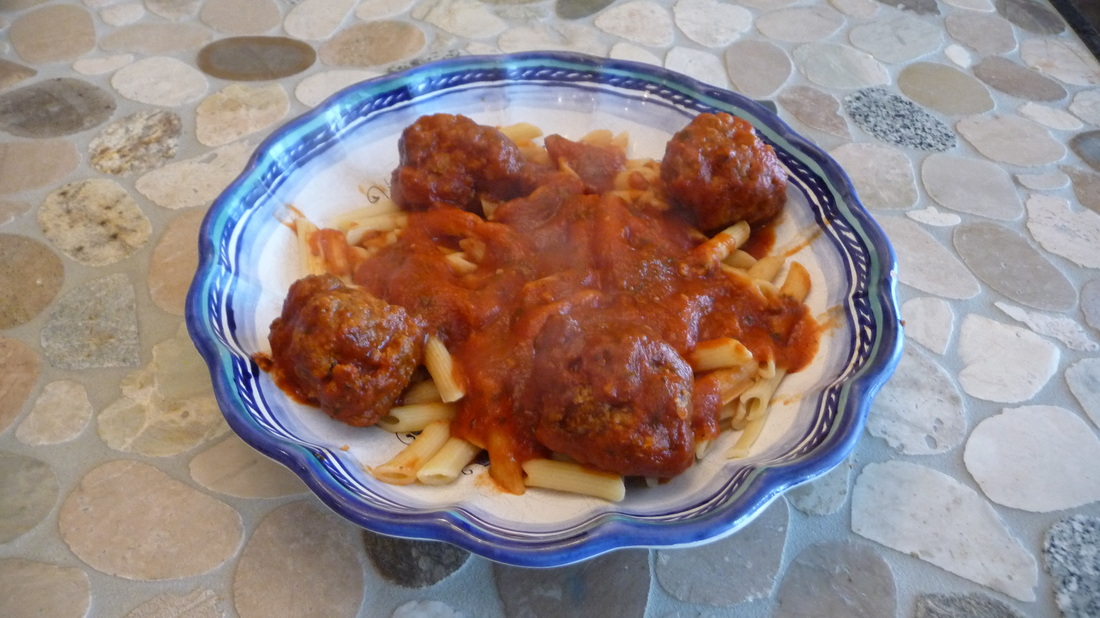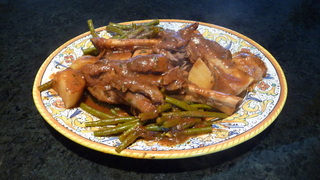| Some of my favorite recipes come from restaurants that I have been fortunate to visit over the years. I’ve already mentioned three in previous blogs: the Kosher Potato Salad from the 2nd Ave Deli in New York, the Not-So-Sloppy Joe from Red & Trudy’s in Olean, New York, and the Braised Short Ribs from the Michigan State University Club in East Lansing. There are others that deserve special mention, too. My all-time favorite comes from Il Latini Ristorante in Florence, Italy. I managed to convince the chef there to share his ingredients list so that I could recreate his wonderful sauce. His English was as poor as my Italian, but we did somehow manage to exchange the needed information. I call his offering Florentine Tomato Sauce. It is the richest, most flavorful, meatless sauce I have ever experienced. | Ziti with Italian Tomato Sauce and Italian Meatballs. |
We lived in Texas for two years – in Plano, a Dallas suburb. It took us just a few microseconds to find our first “real” Texas barbecue – at Sonny Bryan’s Smokehouse. In the early eighties, Sonny's would open around 11 AM and close whenever they sold the last piece of succulent smoky meat, typically before 3 PM. The restaurant is still operating, but I noticed their web page indicates they are open much later now. They have obviously expanded! Their meat was delicious, but their Texas Barbecue Sauce was equally special. Fortunately, their original recipe was published in one of the Dallas newspapers. It has been part of my collection ever since.
We lived for many years in Naperville, Illinois, a Chicago suburb. My favorite local restaurant was Meson Sebika, which specialized in Spanish tapas. Tapas, as you know, are appetizer-size portions of huge varieties of foods served both hot and cold. The recipe included here for Garlic Potato Salad is one of their signature offerings.
Finally, I need to mention two other recipes that did not come from restaurants; two recipes that are more special to me (and to my family) than any of the others. Two recipes that for some inexplicable reason I have failed to mention explicitly, even though they were the first two recipes I added to this site! You guessed it – my family’s Italian Tomato Sauce and our recipe for Italian Meatballs.
If you consider trying any of my recipes, I suggest you try these two. I know you will be pleased, and you will know why I am so proud of what my family taught me.
Buon appetito and Happy Easter.


 RSS Feed
RSS Feed